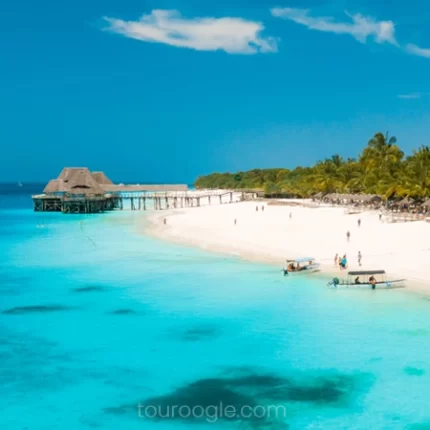

Tanzania is a country in East Africa in the Great Lakes region. It is home to the tallest mountain in Africa, Mount Kilimanjaro, and the most famous safari park in Africa, Serengeti National Park. Let’s not fool ourselves. Tanzania isn’t famous for its elaborate architecture or city structure; people visit this country mainly for its variety of animals and the many national parks that house them.
Tanzania is home to around 20 national parks, not even counting the game reserves and conservation areas. With millions of visitors each year, these parks contribute to a large extent to the country’s economy.
That being said, Tanzania’s economy relies heavily on Agriculture. Mining is also a vital money maker for the country, especially gold. In the Zanzibar Archipelago, the spice trade is the main economy.
With the glorious Mount Kilimanjaro in the north, the great Lake Tanganyika in the west, and the pristine beaches of the Zanzibar Archipelago in the east, Tanzania offers many gems for its visitors.
There is great variety in what it offers; Dar es Salaam lets you come into contact with the African culture in a metropolitan city environment, while the many national parks allow you to experience the natural wonders of Africa firsthand. And Zanzibar is a world of its own. With strong eastern traditional influences and history of the spice trade, it is a unique flavor unlike any you will ever taste.
The biggest freshwater lakes on the continent, rivers that snake through lush forests and golden plateaus filled with the African savanna animals, and the colossal Kili casting a shadow over it all; you will find all these and many more on your Tanzania trip.
Tanzania borders Uganda and Lake Victoria to the north and Kenya in the Northeast. Mozambique and Malawi are its southern neighbors, and Zambia is in the southwest.
Rwanda and Burundi are northwest of the country, while the Democratic Republic of the Congo lies west, on the opposite side of Lake Tanganyika. Finally, The Indian Ocean covers Tanzania’s eastern coasts entirely.
Tanzania has over 40 million people from hundreds of different ethnic backgrounds, most of whom are Bantu. A considerable percentage of this population does not live in the cities. Many Tanzanians live in tribes in rural areas. These include the Maasai, who dominate northern Tanzania and the Great Rift Valley, and the Sukuma, who inhabit the Great Lakes regions.
Much of the population of Tanzania comes from African and Swahili origins. However, Arab and Indian communities also prevail. More than half of Tanzanians are Christians; the Muslims are next, with traditional indigenous beliefs and Hinduism following behind them.
With more than 100 languages currently being spoken in the country, Tanzania is a multilingual country, although Several of these languages are endangered or dying off.
That being said, Kiswahili is the official national and institutional language, and many people can speak and understand English, especially considering the country’s colonial history.
Tanzanian food is diverse and different ingredients are used in other regions. Spicy foods are common, and ginger, garlic, cinnamon, bananas, and coconuts are popular. Many Tanzanian foods are eaten with a side of rice, and soups and stews form a significant portion of Tanzanian cuisine. Here’s a list of some of the most delicious and famous traditional Tanzanian foods: